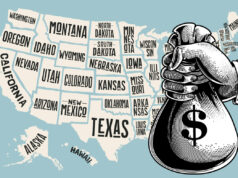Saving money is a wise goal in a debt-ridden world. Whether you’re hoping to finance your next great vacation or build up an emergency fund, putting money away doesn’t have to be difficult.
When it comes to saving money, taking small steps toward a bigger goal is the best way to go. Here are five smart ways to save more money in 2024.
Use Smart Money Saving Tools

Having the right tools in place is a wise move when looking to save money in 2024 and beyond. Using apps to help you track your spending and create a budget will build awareness about where your money is going, and what changes you can make to save.
One of the best apps you can use in 2024 to understand your spending is Mint. Mint shows you where your money went and notifies you when you’re reaching your set budget. Another great personal finance tool is Disputebee credit repair, which can help you correct issues from poor money habits in the past. With the right tools in place, you can set yourself up for personal finance success in the new decade.
Curb Impulse Purchases
Marketers enable strategies that encourage you to spend money before thinking it through. Psychological pricing strategies, like sale end-dates and notifications that stock is running low, can trick you into clicking “buy now” without thinking if you really need something.
Set a time limit for purchases that will help you curb spending. The 30-Day rule is what smart savers use to avoid impulse purchases. Tell yourself that if you still want it in 30 days, you’ll go back and get it. In a world of online shopping, it’s not difficult to find products on sale.
Set Small Goals

When you start saving money, it’s best not to go all in. By severely restricting your spending right off the bat, you’re setting yourself up for failure. It’s similar to going on a crash diet; you’re going to rebound.
Instead, set small, attainable goals. Try using the 3% rule to get you started. Cut back your average monthly spending by 3%, and put the money you save onto your debt or into savings. In either instance, you’re saving money.
Say, for example, that you spend $2500 per month on both necessary and optional purchases. 3% is only $75. You find that by making coffee at home three days a week and skipping one of your usual trips to the restaurant, you can save $75. That’s $900 a year with a simple change.
Reverse-Engineer Big Savings Goals with Specifics
While using small goals is ideal, it can be hard to get in the right mindset when you have a big goal in mind — for example, saving for a down payment on a house. To be able to break your big goal into a small goal, you need to reverse engineer it.
Ask yourself five questions:
- What is my specific goal?
- How much money do I need for this goal?
- When do I need to have it by?
- How much will that cost me monthly, weekly, daily?
- Where will I find this amount?
Many people know what they want to save money for, but don’t attach specifics. Attaching specifics makes the goal more tangible
Use Separate Bank Accounts

Using separate bank accounts is another way to help you save money faster. This approach to saving allows you to divide your income as soon as it hits your bank account using automation so that you aren’t tempted to spend the money you should be saving.
Set up separate savings accounts for things like family trips, retirement funds, and emergency savings. Make these accounts difficult to access or transfer money from.
Audit Your Subscriptions and Fees
Small, repetitive fees add up over time. Set aside time to take a look at your repeat transactions to determine if they can be adjusted or if you need them at all. For example, if you signed up for a free trial of Audible six months ago and forgot about it, you could be losing $20 a month. Rather than saying, “I’ll use it eventually,” practice mindfulness and cancel the subscription.
Another thing to look for is hidden fees. For example, administration fees for having bank statements sent to you via mail rather than online. Bank service fees are another area that you can argue to cut back on monthly expenses.
Paying for cable or streaming services when your preferred shows are on hiatus is another area that you can make a smart cut.
Finally, while email marketing subscriptions don’t cost you anything, they create the temptation to spend. Go through your list of emails that you receive daily and click unsubscribe on those that continuously push sales or have no added value to you. Then you’ll experience the added bonus of decluttering your inbox.
Learn to Say No

One of the most challenging aspects of saving money is facing FOMO– fear of missing out. You shouldn’t have to say no to everything to save money, but learning to be more selective will go a long way. For example, instead of going to brunch with your best friend every weekend, you could go for coffee on most weekends and brunch once a month.
Stop and consider if you really want to do something before you commit. Think about something you know you truly want to do– a vacation to Italy, perhaps– and consider how this event adds up. Saying no to some experiences will allow you to say yes to others by helping you save money.
Don’t hesitate to be open with your friends about your financial goals. You may inspire them to follow in your footsteps. Replace nights out with small at-home gatherings and keep an eye on community bulletins and newsletters to find free events in your area.
2024 is all about mindfulness-based habits and achieving your goals. Use these smart money-saving tips to set you up for a prosperous new year.









